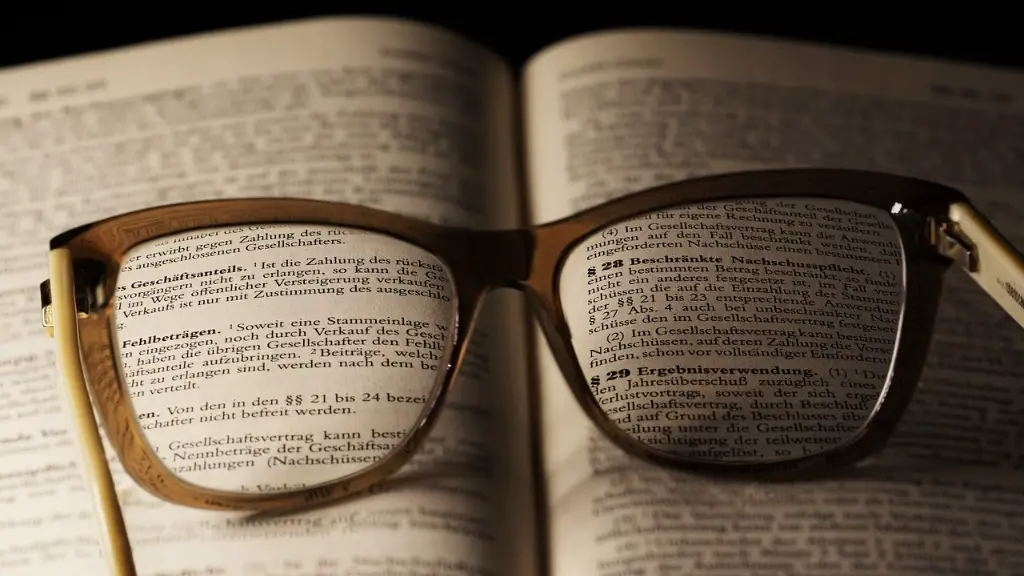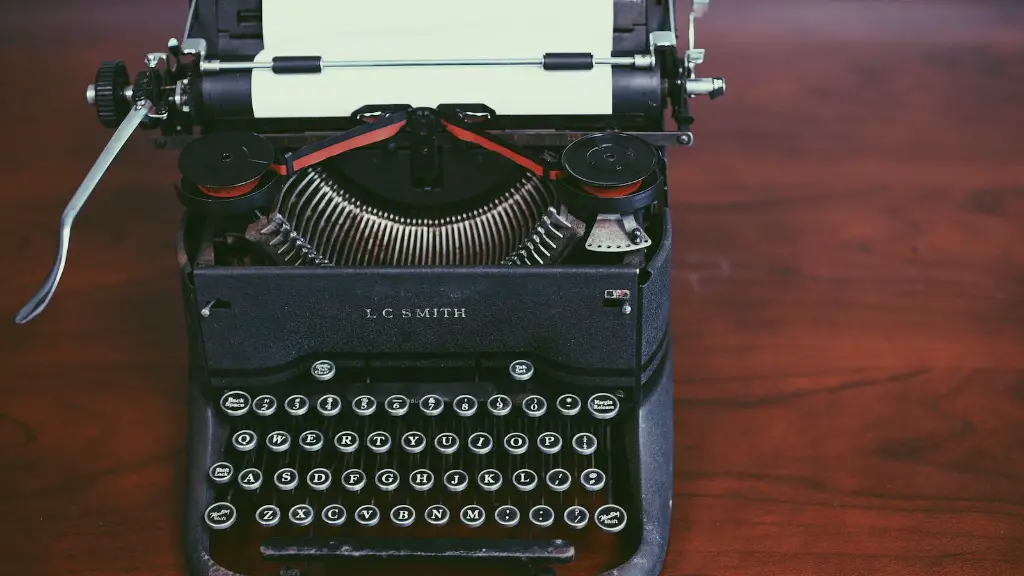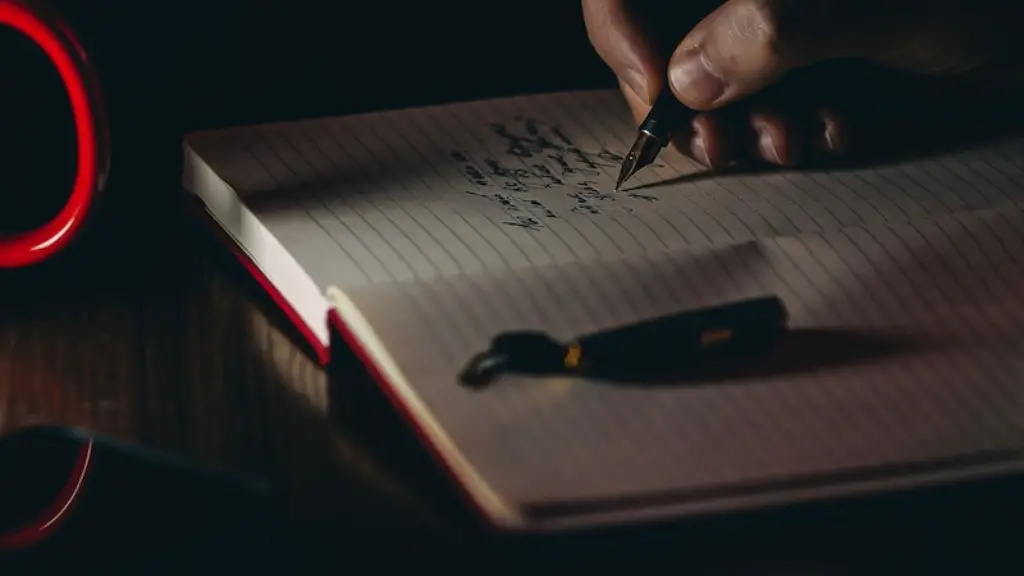What are Graphic Elements in Poetry?
Graphic elements in poetry are an essential part of the writing process, and are generally used to enhance a poem’s visual appeal and structural clarity. In order to engage a reader, a poem must be comprehensible and easily understood. Graphic elements, such as line breaks, rhythm, and sound devices, help to set the tone and mood of the poem and make it more accessible to the audience.
Line Breaks
Line breaks are an important graphic element of poetry. Line breaks are used to divide text into lines, which aids in the reader’s understanding. It also helps to emphasize the poem’s meaning and rhythm. Line breaks also aid in interpreting the poem in terms of tone and mood, and in depicting the action as it’s taking place. By breaking lines in meaningful ways, poets can draw attention to certain details, suggest different meanings, or display a certain emotion.
Rhythm
Rhythm is a strong graphic element in poetry and is often one of the main factors that creates the distinct sound of a poem. Rhythm is established through the use of meter, which is the way a certain number of syllables are combined to create a unique pattern and sound. For example, iambic pentameter is a type of meter in which each line consists of five two-syllable feet, or ten syllables in total. This particular meter is often used in Shakespeare’s plays and sonnets. Other rhythms also exist, such as trochaic, anapestic and dactylic.
Sound Devices
The use of sound devices is another important element in poetry and it helps to create a pleasurable reading experience. These devices use alliteration, assonance and consonance to create auditory effects. Alliteration is the repetition of the same initial sound in a series of words, while assonance is the repetition of a vowel sound in a series of words. Consonance is the repetition of a consonant sound in a series of words.
Visual Elements
Visual elements also contribute to a poem’s overall appearance. Poetic devices such as rhyme and imagery, as well as typographical devices like italicized words, stanza breaks and punctuation can be considered visual elements. They contribute to the psychological effect a poem has on its reader. Visual aids can help to create a mood, theme or even suggest a deeper meaning.
Rhymes
Rhymes are another graphic element of poetry that contribute to its overall sound. Rhyming is a form of repetition in which two or more words have the same sound at the end of the line. Rhymes can create a sense of unity and harmony within a poem and help the reader comprehend the poem’s meaning. The use of internal rhyme, where a word within a line is perfectly rhymed with another word in the same line, can add musicality and help to unify the poem.
Symbolism
Symbolism is yet another important element of poetry. Symbols are used to represent abstract concepts and emotions, and can give readers clues as to what the poem is trying to convey. Symbols can be used to create a theme and deepen the meaning of a poem. The use of symbols can help to draw the reader in and create an understanding at a deeper level.
Shape and Layout
The shape and layout of a poem on the page can also contribute to its overall meaning. The poem’s physical shape can be used to create a visual representation of its ideas and emotions. For example, a poem that is written in the shape of a heart may be interpreted as a love poem. Layout and text size can also be used to draw attention to specific words or phrases in order to emphasize a certain idea.
Narrative Techniques
Narrative techniquesare another important component of poetry. These techniques are used to tell stories and create vivid images in the reader’s mind. Narrative techniques, such as personification, allegory, and imagery, can be used to convey ideas and create a richer and more immersive reading experience.
Effect of Graphic Elements on Poetry
Graphic elements can be used to create a strong visual impact and deepen the readers experience with a poem. When used effectively, these elements can create a tone and atmosphere that draws the reader in and provides an understanding at a deeper level. Graphic elements can also help to create rhythm and unity within a poem and emphasize the message. By utilizing these elements, a poet can create a work of art that speaks to the reader in a unique and powerful way.
Examples of Graphic Elements in Poetry
Examples of graphic element in poetry include line breaks, rhymes, symbol, imagery and visual aids. Line breaks can be used to emphasize certain details or emotion and create an interesting rhythm. Rhymes can give a poem a harmony and unity, while symbols can help to express an idea in a more poetic way. Imagery is another element that is used to describe an idea in a vivid manner. Finally, visual aids such as italicized words and stanza breaks can help to bring a poem to life and give it an emotive element.
Techniques to Utilize Graphic Elements in Poetry
In order to effectively utilize graphic elements in poetry, it is important to consider how the poem may look when it is printed. Think of how the line breaks, visual elements, and sounds may interact with one another. Be mindful to avoid over-using certain elements, as this can lead to a lack of originality or be distracting for the reader. Experimentation is key when incorporating graphic elements into a poem and should be done thoughtfully and carefully.
The Role of Graphic Elements in Enhancing a Poem’s Impact
When done correctly, graphic elements can be highly effective in enhancing a poets work. Graphic elements can be used to emphasize the tone and mood of a poem and draw attention to certain details. It can create unity within a poem and add an interesting rhythm and sound. By using visual elements appropriately, a poet can create a work of art that stands out and leaves a lasting impact on the reader.
How Graphic Elements Impact the Interpretation of Poetry
Graphic elements can have a huge impact on the interpretation of a poem. By utilizing certain elements, a poet can direct the readers attention to what they wish to emphasize and create a unique atmosphere. Line breaks, rhymes, symbols and imagery can all be used to convey an emotion and help the reader to decipher the poem’s meaning and purpose. Additionally, visual elements such as italicized words and stanza breaks can help to create emphasis in order for the reader to more easily grasp the poem’s message.
The Benefits of Utilizing Graphic Elements in Poetry
The use of graphic elements in poetry has a variety of benefits. Graphic elements can add emphasis and clarity to a poem, creating a more enjoyable reading experience for the reader. Additionally, sound devices help to create a musical sound, while symbols help to convey the poem’s meaning at a more symbolic level. Finally, visual elements can help to enhance the poem’s overall appearance, helping to create a more immersive reading experience.
Conclusion: The Impact of Graphic Elements on Poetry
Graphic elements play a pivotal role in poetry as they help enhance the poem’s message and create a more enjoyable experience for the reader. Utilizing elements such as line breaks, rhymes, symbols and imagery can help to make the poem more accessible and easier to interpret. Visual elements, on the other hand, can aid in creating a mood and atmosphere, as well as adding aesthetic appeal to the poem. Overall, the use of graphic elements can be highly effective in helping a poet convey their message and create an engaging piece of work.




